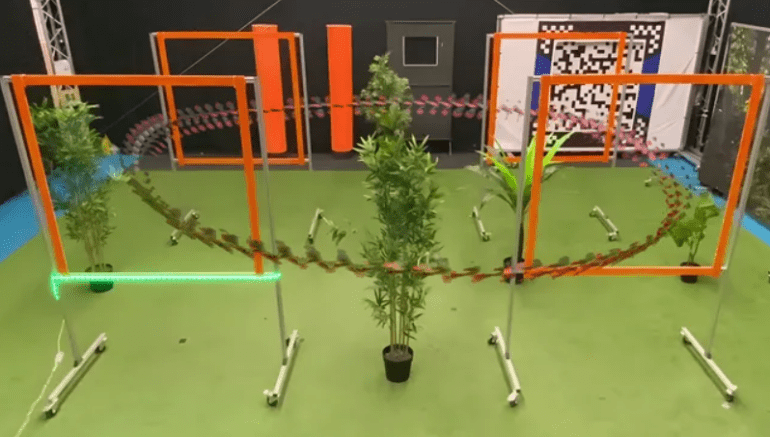- ESA’s Advanced Concepts Team collaborates with TU Delft to train neural-network AI using drone racing.
- Objective: Test AI’s capability to handle complex maneuvers critical for future space missions.
- Neural networks mimic human brain functions, enabling real-time, autonomous spacecraft navigation.
- Potential: AI could optimize onboard operations, enhancing mission autonomy and resilience in space.
- Importance of Earth testing: Drone racing serves as a crucial environment to validate AI technologies for space applications.
Main AI News:
Drone racing is not just about thrilling competitions; it’s also a serious training ground for artificial intelligence destined for the depths of space. The European Space Agency’s (ESA) Advanced Concepts Team (ACT) has joined forces with Delft University of Technology’s Micro Air Vehicle Laboratory in the Netherlands to pioneer neural-network systems capable of piloting drones. This initiative aims to validate AI’s capacity to master intricate maneuvers, a skill crucial for future space missions. Imagine AI-driven spacecraft navigating through cosmic challenges with the precision of a seasoned racer—like a futuristic twist on Star Wars pod racing.
Neural networks, designed to emulate the human brain’s information processing, offer unparalleled potential in autonomously orchestrating complex spacecraft operations. Unlike traditional methods where humans on the ground dictate maneuvers, AI-powered systems can dynamically adjust their course based on real-time data, adapting swiftly to the unpredictable nature of space.
“In space, every resource onboard—propellant, energy, computing power, and time—must be optimized to the fullest extent possible,” explains Dario Izzo, scientific coordinator of ESA’s ACT. “Implementing neural network technology could revolutionize onboard operations, enhancing mission autonomy and resilience.”
Before deploying this technology in space, rigorous testing on Earth is essential. “Drone racing provides the perfect proving ground to refine neural architectures on physical robotic platforms,” notes Izzo, highlighting the critical role of these terrestrial trials in ensuring confidence for future space missions.
Conclusion:
This initiative marks a significant leap forward in advancing AI capabilities for spacecraft autonomy. By leveraging drone racing as a testing ground, ESA and TU Delft are pioneering technologies that could revolutionize space missions. The ability to autonomously navigate spacecraft using neural-network AI not only promises enhanced efficiency and flexibility in space operations but also underscores the growing integration of advanced AI systems across high-stakes industries. This development signals a transformative shift towards more autonomous and resilient space exploration technologies in the near future.

